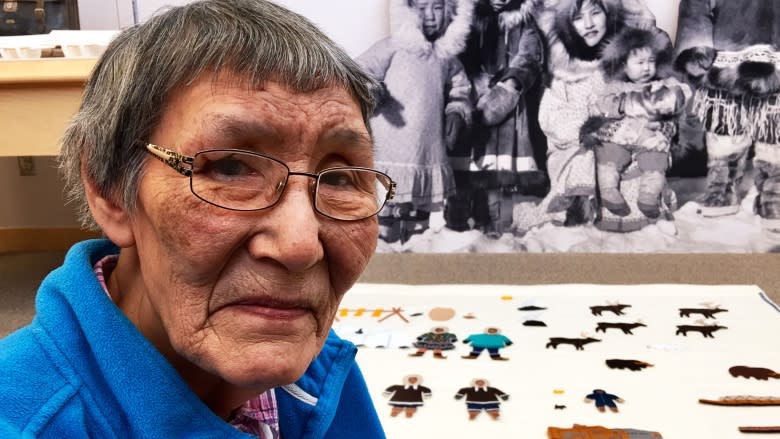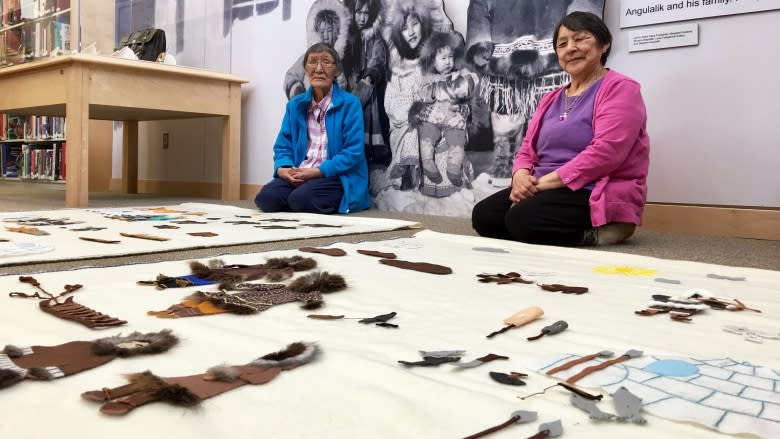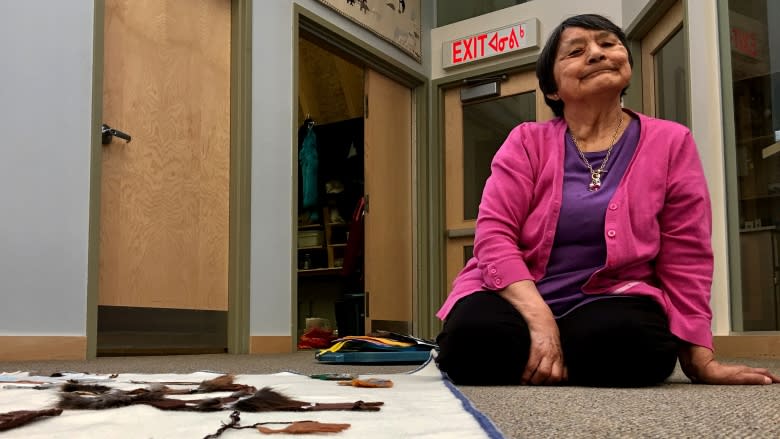'We're trying to make it look like us': Kitikmeot Inuit history to go on display at Arctic research station
Mary Avalak sits hunched over a white duffel canvas rearranging small felt cutouts depicting a hunting scene — a hunter, seals and a dog team.
"How can I cut this out, how can I make this look [like an] igloo," ponders Avalak, 68, who is one of three elders hand-sewing pieces that will dress the walls of the Canadian High Arctic Research Station, currently under construction in Cambridge Bay, Nunavut.
"We're trying to make it look like us Inuit," she said.
The three wall hangings, which measure two and a half metres tall, celebrate Inuit culture in the Kitikmeot region during three different eras: before trading, the 1950s and the present day.
- FEATURE | Canadian High Arctic Research Station takes shape
"One of the biggest changes is in the clothing," explains Pamela Gross, executive director of the Kitikmeot Heritage Society who helped pitch the project. She says the works could serve as a history lesson for visiting scientists from around the world.
"Going from the traditional caribou skin kamiks to utilizing the threads and the melton cloth. It's a significant piece of our identity today," Gross said. "I hope they can see the way we used to live. And the way we transitioned into life in Cambridge Bay."
Wall hangings popular Nunavut art form
Since September the women, who are resident elders with the Kitikmeot Heritage Society, have gathered six days a week, clocking in hundreds of hours with their needle and thread in hand.
The department of Indigenous and Northern Affairs commissioned the work and is paying the elders $15,000. The world-class research station will be a hub for Arctic knowledge from scientists around the world, who will see the artwork after it opens later this year.
Mabel Etegik, 73, learned to sew from her mother as a young girl. She was hesitant taking on a project this big.
"I didn't think I would be able to do it," Etegik said. "But in the end I truly enjoyed being a part of it."
Each tapestry consists of 30-40 felt pieces, so small they can only be sewn by hand. They include muskox, char smoking on a rack, the community's old stone church and even a mini-Canadian High Arctic Research station.
"I am proud of what I have done," Etegik said. "It's good for the community."




